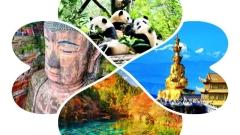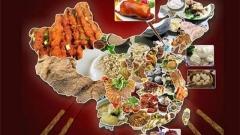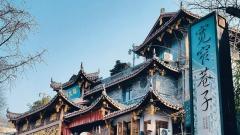Nestled in the heart of southwest China, Sichuan province offers an intoxicating tapestry of history, art, and flavor that beckons travelers from around the globe. From the whispering bamboo groves and mist-shrouded mountains to the fiery aromas of street-side hotpots, Sichuan’s traditional culture strikes a perfect balance between ancient splendor and modern vitality. Yet with only so many days to spare, a finite budget, and limited energy, planning an immersive journey can feel overwhelming. In this guide, we distill Sichuan’s cultural treasures into thematic highlights—Ancient Civilizations, the Three Kingdoms legacy, Sichuan Opera, tea traditions, and its beloved cuisine—so you can maximize every moment of your adventure.
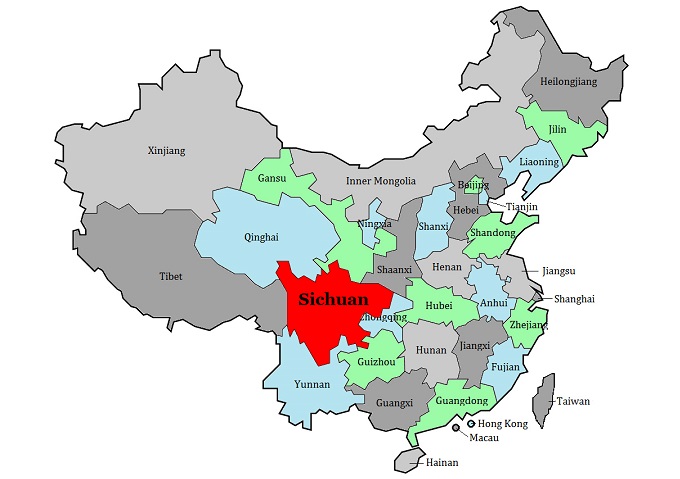
Sichuan Map
Rediscovering Ancient Sichuan Civilizations
Long before Chengdu rose to prominence, the plains and river valleys of Sichuan bore witness to remarkable civilizations that flourished and then vanished, leaving behind tantalizing relics of their once-vibrant societies. Excavations at Sanxingdui and the later Jinsha Site Museum have revolutionized our understanding of Sichuan’s prehistoric cultural prowess.
- Sanxingdui Museum
Tucked away near Guanghan, the Sanxingdui Museum showcases a civilization so unique that until its 20th-century rediscovery, scholars believed Sichuan merely mirrored northern dynasties. Here, towering bronze human figures, visceral masks, and ritual jades hint at a society with spiritual practices and artistic conventions radically different from contemporaneous cultures elsewhere in China. Wandering its airy halls, you’ll sense the silent drama of a culture lost to time, offering a must-see primer on the mysteries that predate imperial China.
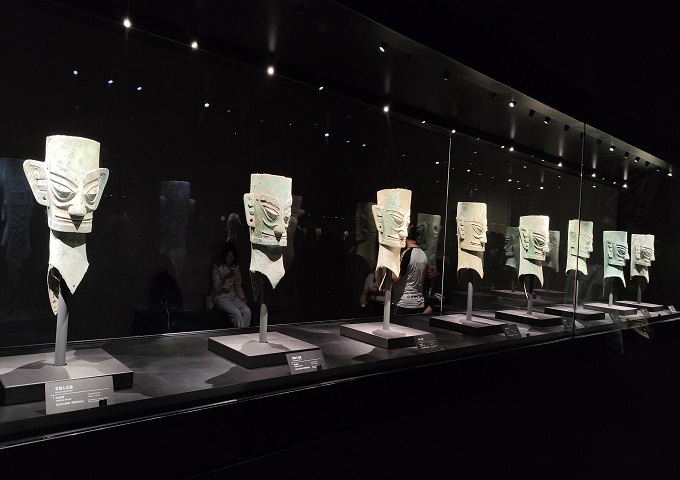
Sanxingdui Museum
- Jinsha Site Museum
Just a short drive from downtown Chengdu lies the Jinsha Site, where archaeologists unearthed a sprawling cultural hub that rose as Sanxingdui declined. Interactive exhibitions bring to life the daily rhythms of an ancient metropolis, from its bustling marketplaces to its religious ceremonies under the watchful gaze of golden sunbird ornaments. Visiting Jinsha underscores Sichuan’s continuous role as a cradle of innovation and regional power long before imperial mandates.
Travel Tip: Combine your museum visits with a stroll through adjacent local markets, where artisans sell reproductions of Sanxingdui bronzes and hand-crafted pottery—a perfect souvenir of your journey into the province’s deep past.
Journey Through the Shu Han Legacy: Three Kingdoms Culture
Few chapters of Chinese history capture the imagination quite like the Three Kingdoms period (220–280 CE), when the Shu Han kingdom—headquartered in Chengdu—vied for supremacy alongside Wei and Wu. Tales of heroism, strategy, and loyalty abound, and traces of this epoch remain woven into the province’s landscape and street names.
- Wuhou Shrine (Wuhou Temple)
Dedicated to Zhuge Liang, the legendary strategist of Shu, and Liu Bei, its founding emperor, the Wuhou Shrine is a serene enclave of temples, pavilions, and bamboo gardens. Stroll the corridors lined with stone tablets inscribed with couplets praising martial valor and diplomatic cunning, then pause beneath ancient ginkgo trees to reflect on the enduring legacy of these storied figures.

Wuhou Shrine
- Langzhong Ancient City
A two-hour drive northeast from Chengdu brings you to Langzhong, a living museum of traditional architecture dating back over a millennium. This well-preserved urban relic was once garrisoned by Zhang Fei, the fierce general of Shu. Wander its cobblestone lanes, peer into family-run teahouses, and explore cliff-side tombs that pay homage to geomantic omen culture—a testament to the era’s blend of folklore, superstition, and military necessity. - Jianmen Pass
Carved through the Qinling Mountains, Jianmen Pass was the chokepoint that Shu forces used to stymie invasions from the north. Today, a hiking trail and restored watchtowers allow you to reenact ancient maneuvers while gazing out over precipitous gorges. It’s a dramatic way to connect with the tactical genius that once defined this rugged frontier.
Insider Note: To breathe life into the Three Kingdoms stories, consider joining a guided re-enactment tour or attending a night-time lantern show that dramatizes the Siege of Chuiping—an unforgettable cultural immersion.
The Enchanting World of Sichuan Opera
No exploration of Sichuan’s cultural heritage is complete without a night at the opera. Renowned nationwide for its vivid storytelling, acrobatics, and the mesmerizing art of face-changing (“bian lian”), Sichuan Opera offers both visual spectacle and a window into local customs.
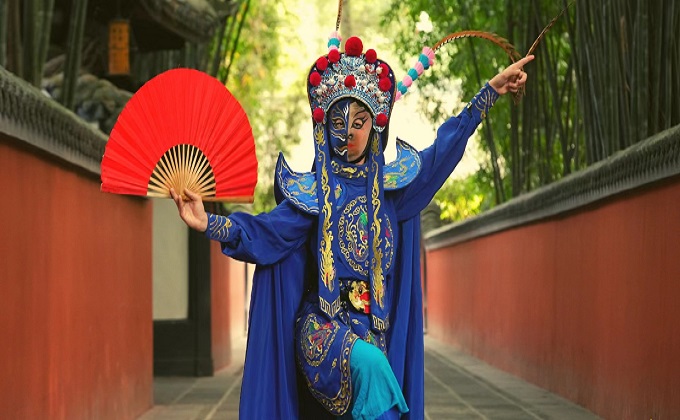
Sichuan Opera
- Shu Feng Ya Yun Theatre
Often lauded as the premier venue for Sichuan Opera, Shu Feng Ya Yun combines state-of-the-art acoustics with traditional stagecraft. Watch in awe as performers shift colorful masks in the blink of an eye, intersperse fire-spitting feats, and enact scenes drawn from classical novels like Romance of the Three Kingdoms or Journey to the West. - Street Performances on Jinli Ancient Street
For a more casual atmosphere, head to Jinli Ancient Street at dusk. Along this pedestrianized boulevard of Qing-dynasty architecture, small opera troupes set up impromptu stages. Here, you can sample street snacks between acts, mingle with locals, and even try your hand at hand-shadow puppetry in intimate workshops. - Kuanzhai Alleys (Wide and Narrow Alleys)
This trio of historic lanes offers an ambiance of old Chengdu. In the evening, lanterns glow, tea houses hum, and pocket-sized opera studios host hour-long performances ideal for travelers on a tight schedule. Pair your show with a steaming cup of jasmine tea for the ultimate sensory experience.
Pro Tip: Arrive early to secure a seat close to the stage. Many theaters sell tickets that include traditional refreshments—don’t miss the chance to savor ginger candy or local pastries during intermission.
Embracing Tea Traditions: From Leaf to Cup
Sichuan’s emerald-green hills and humid subtropical climate create perfect conditions for tea cultivation. The province boasts a millennia-old tea-drinking culture where strolling through a local park with a steaming cup is as much a social ritual as it is a daily pastime.
- Renmin Park Tea Houses
In the heart of Chengdu, Renmin Park is dotted with teahouses where retirees gather to play mahjong, chat over long life lotus tea, or enjoy bamboo flute serenades. Renting a wicker chair riverside is a budget-friendly way to absorb the city’s leisurely pace.
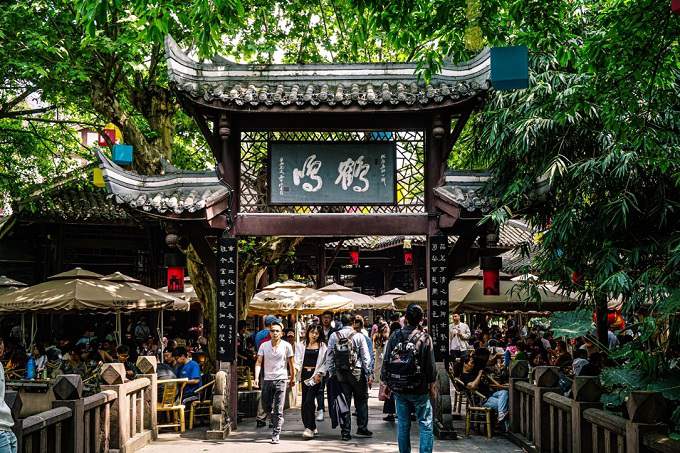
Renmin Park Tea Houses
- Mengding Mountain Tea Plantations
Venture two hours west to Mengding Mountain, reputed as the birthplace of Sichuan tea. Here, terraced fields stretch toward the horizon. Join a tea-plucking excursion in spring to hand-pick tender leaves under the guidance of local farmers. After harvesting, you’ll learn processing techniques—pan-frying, rolling, and drying—that transform fresh foliage into fragrant green tea. - Tea Tasting and Workshops
Whether in Chengdu or on the mountain, many estates offer guided tastings that highlight subtle regional variations: the brisk aroma of Ya’an’s highland teas, the mellow sweetness of Pengzhou’s yields, and the silky finish of Mengding’s prized cultivars. Take home a few tins of tea you’ve helped process—a tangible memory of your hands-on cultural quest.
A Culinary Adventure: Feast on Sichuan Flavors
Known worldwide for its bold, multi-layered flavors, Sichuan cuisine is a celebration of spice, numbing peppercorns, and ingenious cooking methods. No matter your palate—fiery, sweet, sour, or umami—Sichuan’s kitchens cater to every craving.
- Hotpot: A Social Ritual
Gather around a steaming pot of bubbling broth—half fiery mala, half mild herbal—and cook thin slices of beef, lotus root, tofu skin, and seasonal greens. Dipping sauces are endlessly customizable: sesame paste, crushed garlic, cilantro, fermented bean curd, and chili oil combine in personal creations that spark conversation as much as appetite.
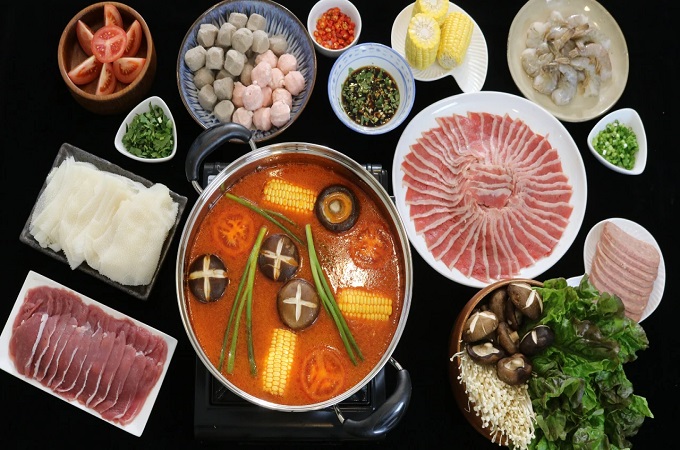
Hotpot
- Mapo Tofu and Kung Pao Chicken
Sample these classics at humble neighborhood diners or upscale restaurants. Balance silky tofu cubes against numbing Sichuan peppercorns in Mapo Tofu, or savor the sweet-spicy crunch of Kung Pao Chicken with its toasted peanuts and dried chilies. Each bite exemplifies the province’s mastery of “ma” (numbing) and “la” (spicy). - Liangfen and Street Snacks
For a refreshing counterpoint to heat, look for liangfen—a jelly-like dish made from mung bean starch, served chilled with vinegar, garlic, and chili oil. At street markets, don’t miss dan dan noodles, spicy rice cakes, and grilled quail eggs. These quick bites reveal the everyday ingenuity of Sichuan’s street-food culture. - Culinary Workshops
In Chengdu, cooking schools invite you into professional kitchens where expert chefs demystify classic recipes. From kneading spicy dough for Chongqing dandan noodles to mastering the wok toss for fish-fragrant eggplant, these classes leave you with tangible skills—and a delicious sense of achievement.
Savvy Saver: Many eateries in Chengdu offer set menus or lunch specials that showcase multiple dishes at a fraction of dinner prices. Plan your gourmet excursions around midday to sample top-quality cuisine without overspending.
Planning Your Cultural Exploration
To make the most of your Sichuan adventure, consider a thematic itinerary that clusters sites and activities by proximity:
Central Chengdu (2–3 days):
- Sanxingdui & Jinsha Museums (day trip to Guanghan and Jinsha)
- Renmin Park & tea houses
- Sichuan Opera at Shu Feng Ya Yun & Jinli Ancient Street visits
- Cooking class and gourmet street-food crawl
Northern Sichuan (2–3 days):
- Langzhong Ancient City exploration
- Jianmen Pass hike
- Wuhou Shrine and Three Kingdoms heritage sites
Western Sichuan (1–2 days):
- Mengding Mountain tea plantations and workshops
- Optional side-trip to Mount Emei or Leshan Giant Buddha
Transportation Tips:
- High-Speed Rail: Connects Chengdu with major cities like Chongqing and Leshan.
- Long-Distance Buses: Reach Langzhong, Guanghan, and rural tea villages affordably.
- Car Rentals & Drivers: Offer flexibility for off-the-beaten-path drives, especially around Jianmen Pass.
Accommodation:
- Boutique guesthouses in ancient city centers preserve historic architecture.
- Riverside tea lodges near Mengding Mountain provide tranquil mountain vistas.
- Mid-range hotels in Chengdu embrace modern comforts with easy access to parks and eateries.
China Dragon Travel: Your Gateway to Authentic Sichuan Experiences
Embarking on an in-depth cultural journey through Sichuan—immersing yourself in millennia-old civilizations, legendary wartime strongholds, theatrical marvels, tea rituals, and culinary masterpieces—can be a logistical challenge without expert guidance. At China Dragon Travel, we specialize in crafting bespoke itineraries that balance your interests, budget, and energy. Whether you dream of private tours through silent museum galleries, exclusive cooking lessons with local masters, or restful stays in heritage courtyards, our seasoned consultants ensure every detail is tailored for an unforgettable voyage. Let China Dragon Travel be your trusted companion as you uncover the living tapestry of Sichuan’s traditional culture. Contact us today, and together, we’ll turn your Sichuan fantasy into reality.





